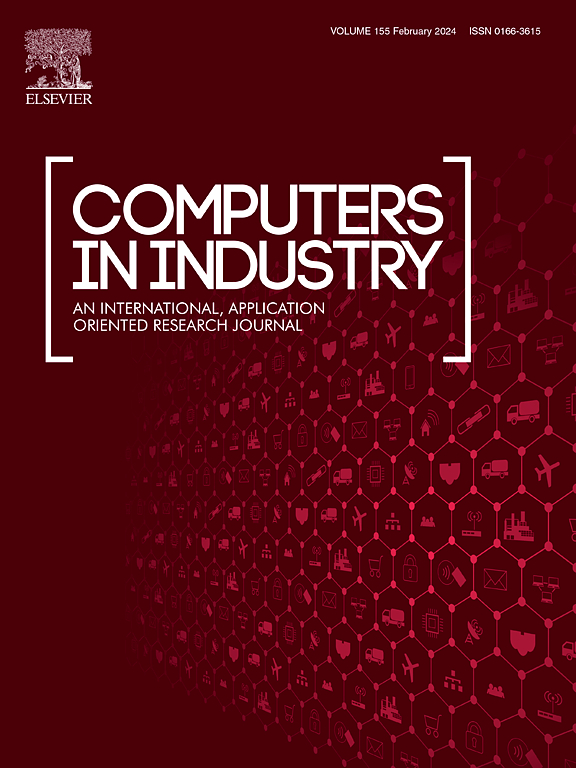Integrated label correction for e-commerce data: Boosting accuracy with baseline attention and enhanced Bayesian updating
IF 9.1
1区 计算机科学
Q1 COMPUTER SCIENCE, INTERDISCIPLINARY APPLICATIONS
引用次数: 0
Abstract
The rapid growth of the e-commerce industry has led to an explosion of product data, which e-commerce platforms increasingly leverage to enhance operational decision-making. However, the presence of label noise in product data poses a significant challenge, as mislabeled data can degrade decision-making performance, negatively impacting both platform efficiency and user experience. To tackle this challenge, this paper proposes an integrated label correction (ILC) method, featuring two key innovations: a baseline attention (BA) mechanism for noise detection and an enhanced Bayesian updating (EBU) strategy for label prediction. The proposed BA mechanism utilizes a dynamic attention scaling approach with learnable parameters to measure the similarity between samples and their labeled classes. The EBU strategy integrates sample features and noisy observations into a unified probabilistic framework, jointly optimizing the classifier and the label correction process. A novel adaptive noise transition learning approach is further introduced to refine the noise transition matrix. Extensive experiments on a real-world JD text dataset, a benchmark image dataset, and an automotive user review dataset validate the effectiveness of the proposed ILC method. It consistently outperforms state-of-the-art approaches on average, achieving a 2.78% improvement on the JD dataset, and gains of 0.80% on the image dataset and 1.73% on the review dataset across different noise types. These improvements demonstrate that the ILC method not only improves classification performance but also offers scalable solutions to reduce mislabeling errors in real-world e-commerce platforms, thereby enhancing recommendation systems, inventory management, and user satisfaction.
电子商务数据的集成标签校正:通过基线关注和增强贝叶斯更新来提高准确性
电子商务行业的快速增长导致了产品数据的爆炸式增长,电子商务平台越来越多地利用这些数据来增强运营决策。然而,产品数据中标签噪声的存在带来了重大挑战,因为错误标记的数据会降低决策性能,对平台效率和用户体验产生负面影响。为了应对这一挑战,本文提出了一种集成标签校正(ILC)方法,该方法具有两个关键创新:用于噪声检测的基线注意(BA)机制和用于标签预测的增强贝叶斯更新(EBU)策略。所提出的BA机制利用具有可学习参数的动态注意力缩放方法来度量样本与其标记类之间的相似性。EBU策略将样本特征和噪声观测值整合到统一的概率框架中,共同优化分类器和标签校正过程。进一步介绍了一种新的自适应噪声转移学习方法来细化噪声转移矩阵。在现实世界JD文本数据集、基准图像数据集和汽车用户评论数据集上进行的大量实验验证了所提出的ILC方法的有效性。平均而言,它始终优于最先进的方法,在JD数据集上实现了2.78%的改进,在不同噪声类型的图像数据集上实现了0.80%的增益,在评论数据集上实现了1.73%的增益。这些改进表明,ILC方法不仅提高了分类性能,而且提供了可扩展的解决方案,以减少现实世界电子商务平台中的错误标记,从而增强了推荐系统、库存管理和用户满意度。
本文章由计算机程序翻译,如有差异,请以英文原文为准。
求助全文
约1分钟内获得全文
求助全文
来源期刊

Computers in Industry
工程技术-计算机:跨学科应用
CiteScore
18.90
自引率
8.00%
发文量
152
审稿时长
22 days
期刊介绍:
The objective of Computers in Industry is to present original, high-quality, application-oriented research papers that:
• Illuminate emerging trends and possibilities in the utilization of Information and Communication Technology in industry;
• Establish connections or integrations across various technology domains within the expansive realm of computer applications for industry;
• Foster connections or integrations across diverse application areas of ICT in industry.
 求助内容:
求助内容: 应助结果提醒方式:
应助结果提醒方式:


